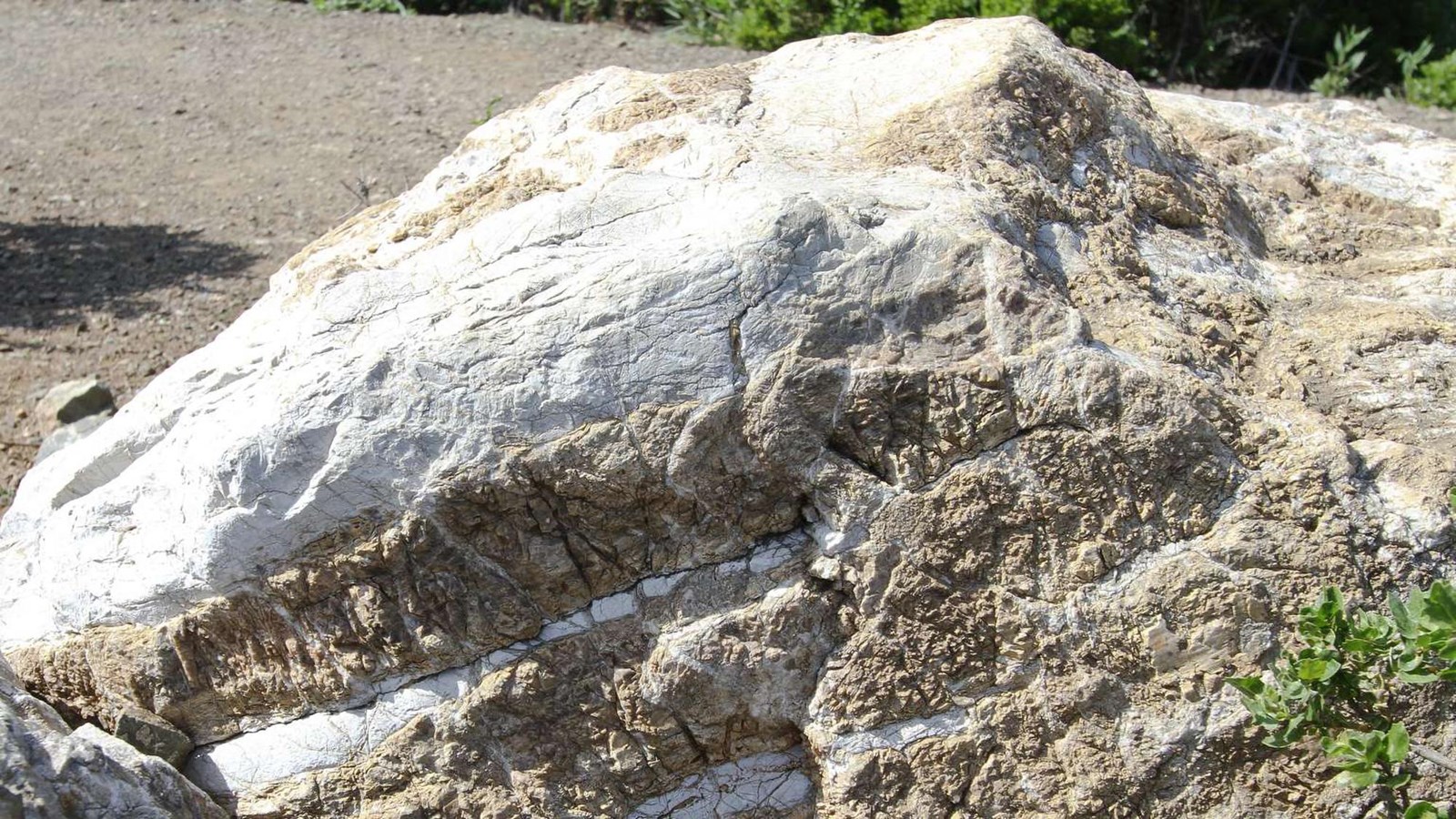Last updated: March 2, 2021
Place
Limestone

The large, white boulder near the base of Bootlegger's Steps is local limestone. Mori Point is one of the few places in the San Francisco area where limestone occurs in industrial quantities. Mori's limestone interested the people that lived here through the centuries. Native Ohlone people quarried the rock for construction, decoration and trade.
When the Spanish arrived in 1776, they used Mori's limestone for constructing buildings at the Presidio and Mission, as well as whitewash for Presidio structures. After a period of inactivity, the quarries became active again during rebuilding efforts after the 1906 San Francisco earthquake, and during World War II. By the 1980s, the quarries were shutting down for good.
The limestone also interested local scientists, who wanted to know how these isolated limestone blocks formed. The marine fossils in the limestone bodies show that they formed on the shallow tops of submarine volcanoes in the central Pacific. Between 130 and 80 million years ago, these volcanoes took a ride towards North America on an ocean plate conveyor belt. When they arrived at the continent, the mountain peaks with their white limestone caps became lodged in the side of the continent rather than slipping under it like the rest of the ocean crust.
